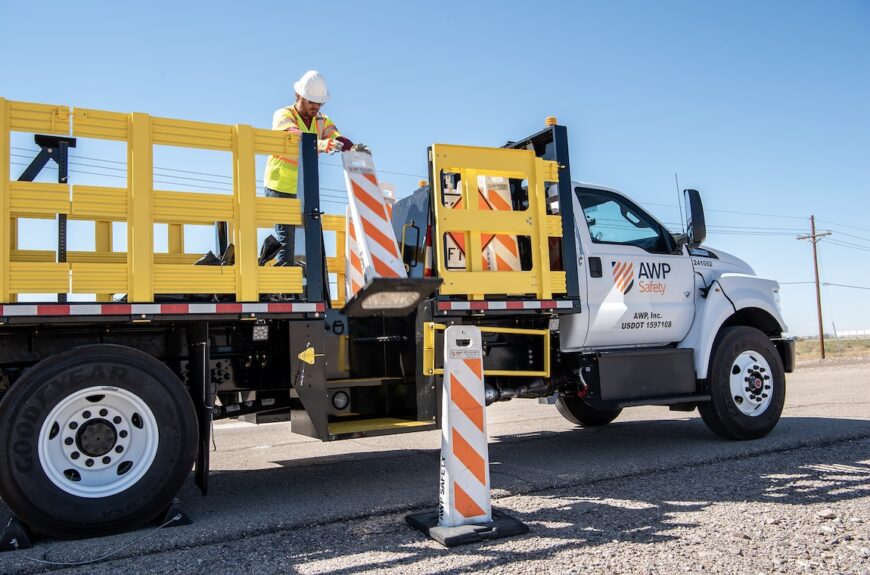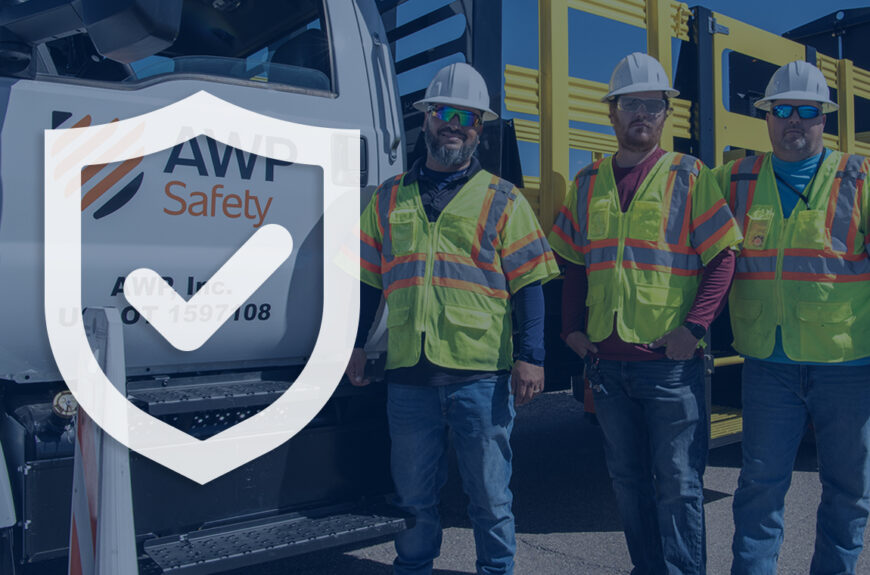
VP of Safety Authors For Construction Pros Article on Traffic & Construction Safety
Mark Ludewig, AWP Safety vice president of safety, authored a recent For Construction Pros online article explaining integrative strategies for traffic and construction safety. At AWP, our teams understand how effective planning minimizes downtime and helps keep personnel in the work zone safe. As an industry expert, Mark shares key insights to help drive operational safety and efficiencies.
Optimization of construction projects is not solely about labor, material and equipment costs, but also the strategic planning and execution of effective traffic management strategies. Successful projects incorporate minimization of downtime, planning for successful outcomes, proficient training, and the implementation of best practices. In the article, Mark delves into each of these topics.
Minimizing Disruptions
Proficient traffic management is essential. It involves planning work schedules around peak traffic times; providing clear and timely information to the public; and the strategic deployment of signage, barriers, and designated pathways and detours. Work disruptions invite delays, cost overruns and a negative public perception. Implementing several best practices can help maximize the return on investment (ROI) through efficient work zone management and minimize disruptions
Planning for Success
The planning phase lays the foundation for smooth integration between construction activities and traffic flow. Carefully crafted traffic management plans consider project duration, anticipated traffic volume and site-specific needs, utilizing a comprehensive analysis of traffic and potential associated risks.
Worker & Management Training
The success of traffic management strategies hinges on the knowledge and competence of the workforce. Leverage comprehensive training programs for workers and management to ensure that all personnel are familiar with safety protocols. Be sure to leverage customized curriculum tailored to the needs and risks of individual construction projects and utilize a program with active engagement and interactive training methods, such as hands-on simulations, role-playing and group discussions. These methods have been shown to significantly improve retention rates and understanding of complex safety concepts. Leaders should participate in comprehensive training themselves and advocate for safety initiatives, emphasizing the significance of compliance and encouraging a culture that values well-being more than expedience or cost-cutting measures.
Best Practices for Optimal Outcomes
Best practices for maintaining safety in the work zone include the regular inspection and maintenance of barriers and signage to ensure their effectiveness, the implementation of speed reduction measures within the work zone, and the provision of clear, continuous communication to all personnel and motorists regarding safety procedures and any changes in the work environment. To help ensure the success of traffic management efforts, construction professionals should adhere to several best practices:
- Display clear signage
- Have an emergency plan
- Daily safety briefings
- First aid and medical access
- Evaluation and feedback
- Continuing education
Companies embarking on projects should also prioritize the integration of professional traffic management services. Expert traffic control providers bring to the table a wealth of experience in designing and implementing effective strategies. Furthermore, by relying on specialists well-versed in local regulations and top-tier work zone practices, firms can avoid legal pitfalls and community backlash by ensuring that timelines are adhered to without unnecessary disruptions.
Enhancing the ROI for construction activities requires a comprehensive strategy that includes a plan for effective traffic management. By streamlining operations and reducing risks, companies not only safeguard their teams and the general public, but also stand to boost productivity. In the long run, this investment contributes to the immediate success of a project and can bolster a company’s reputation for reliability and safety, paving the way for future business opportunities.
For more detail, read the full article online at For Construction Pros.com.



